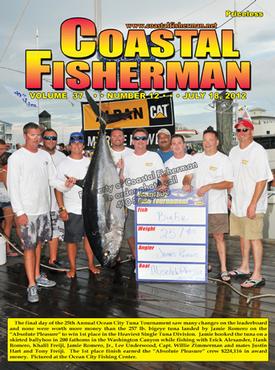


Article by Pat Schrawder
 ANYTHING NEW IN AUTO PILOTS?
ANYTHING NEW IN AUTO PILOTS?
With smaller and smaller boats venturing further offshore and the price of auto pilot’s having come down, more and more boaters are opting to have one installed. Of course you can steer your boat yourself but not as accurately or efficiently. Beyond that, just imagine a day offshore without having to be constantly holding on to the steering wheel and you’ll be tempted.
The basic automatic pilot system is not just one or two items, it is several things, working together as a system to steer your boat on a straight course. Depending on the manufacturer, a basic system designed for hydraulic steering systems might consist of a pump and motor, hydraulic lines, a compass, a rudder feedback unit or virtual feedback, a junction box and a control unit. Each of these pieces has its own function and, together, they can take over the steering of your boat with little, if any, intervention on your part.
The pump is installed in line with your vessel’s hydraulic steering system by a set of additional lines and this pump is responsible for sending hydraulic fluid through the lines to turn your rudders a certain degree. This pump comes in more than one size to accommodate different size boats. There are also a number of linear drive units to use when hydraulic systems are not present.
A rudder feedback may be connected to a rod that, in turn, is connected to your rudders. The system turns the rudders, and the feedback tells the system where the rudders are at any given time. For outboards, a linear feedback can be used to connect to your outboard(s) and perform a similar function. Something called “virtual feedback” may be used where no actual rudder feedback can fit, but it requires a better compass unit.
The compass of the pilot operates separately from your ship’s compass and functions only for the pilot to determine what heading the boat is steering. The placement of the compass is very critical to the successful operation of the pilot system.
The control head is the part of the system that you operate. It has an LCD display that indicates several readings such as current heading, rudder action, status and mode. There are usually knobs or buttons that can be used to “dodge” around an obstacle and to set the various modes.
The junction unit is the general interface box into which all connections from the above mentioned pieces of the system join with each other. This junction box, as well as the other pieces of the system except the control head, can all be placed out of sight.
The selection of the correct auto pilot for your boat can be critical to its performance. Auto pilot systems are not “one size fits all” and, therefore, you need to get the right configuration for the size of your boat and the type of steering system that you have. In addition, the installation of an automatic pilot is something that should be left to those who understand the complexities of the system. In the case of a hydraulic unit, the steering system of your boat must be taken down, cut into, purged and brought back up to pressure.
There are four major suppliers of auto pilots - Simrad, Garmin, Raymarine and Furuno. Each one has some features that they tout as the best. For example, Garmin makes one specifically designed to be compatible with the Viking boat’s VIPER control system. However, a comparison of these four manufacturer’s auto pilot models will show that they are basically the same and that special patented features are just “a rose by any other name…” Nevertheless, there are some things you need to be aware of if you are in the market for an automatic pilot.
The most important of these is the software compatibility. Some auto pilots are only compatible with NMEA 2000 GPS/plotter units or need an adapter to connect to an older NMEA 0183 unit and that adapter has to be figured into the cost. Then there is the matter of rudder feedbacks. The move today is toward virtual feedbacks and they are easier to install, but we have found the actual rudder feedback units to produce better steering. The size of the hydraulic pump is also a major factor. The more heavy duty the pump is, the more it costs, but using a pump too small for your size vessel just defeats the whole purpose of having an auto pilot in the first place. Some of the new touch screen plotters offer the option of controlling your auto pilot functions from your plotter screen but you must have an auto pilot that is compatible and that is usually the same brand.
You know the old saying, “the last thing someone puts on their boat is an auto pilot and the FIRST thing they put on their NEW boat is an auto pilot”.
Pat and her husband, Larry are owners of L&L Marine Electronics on Golf Course Road in West Ocean City, MD.